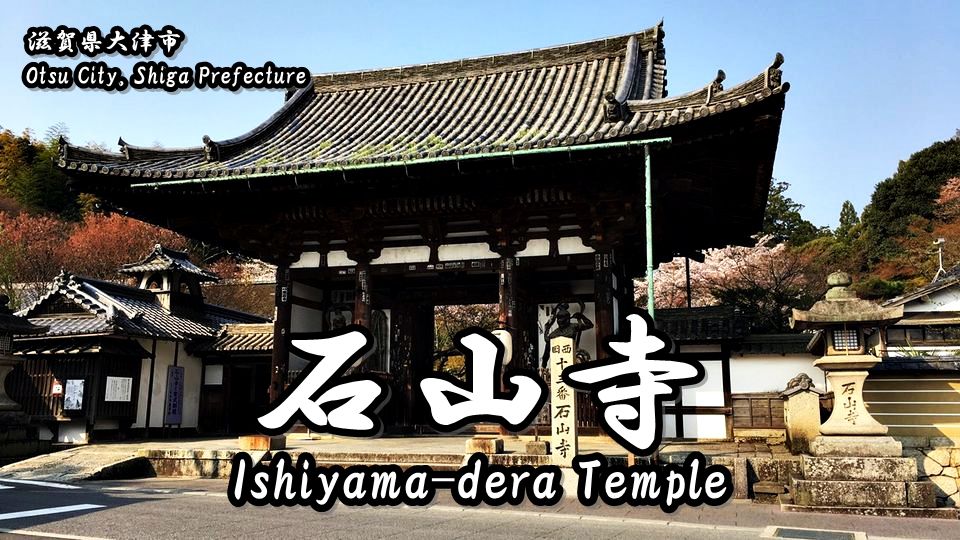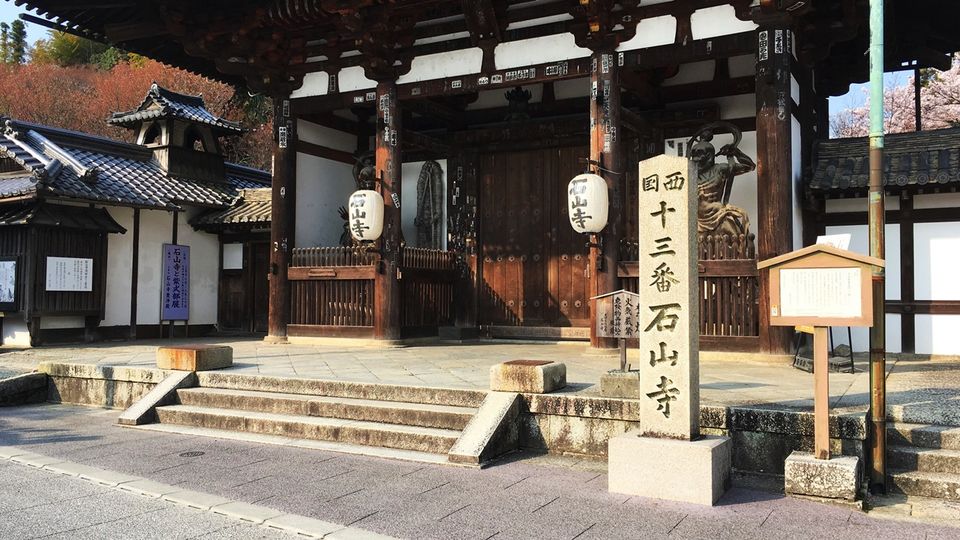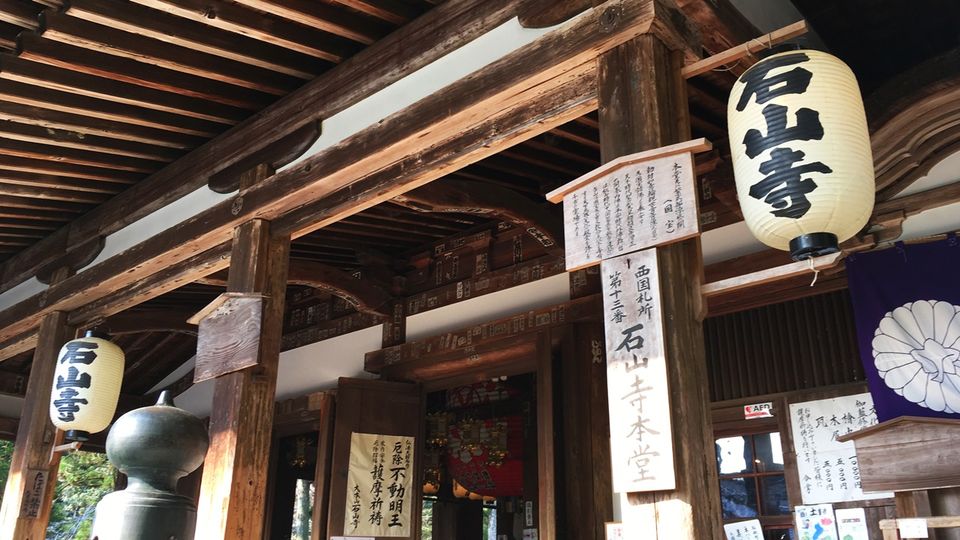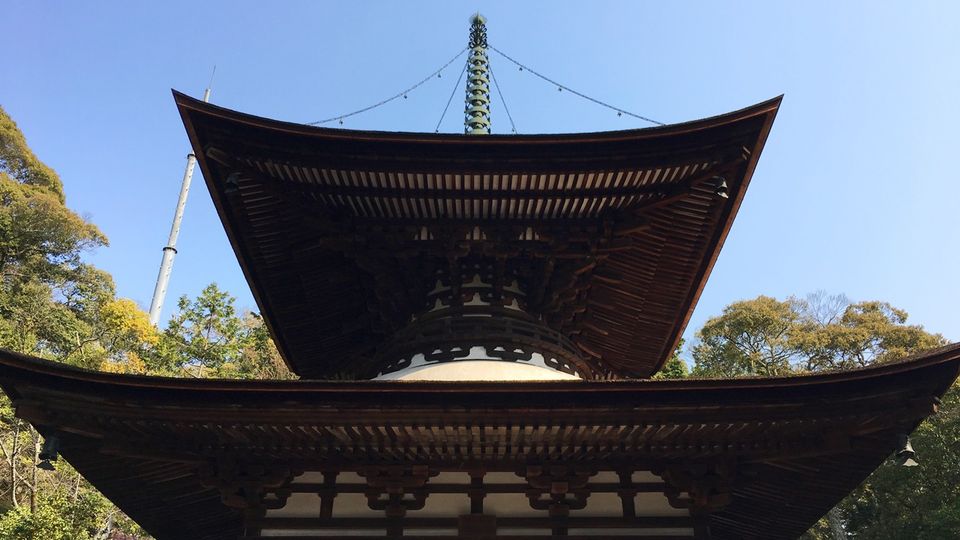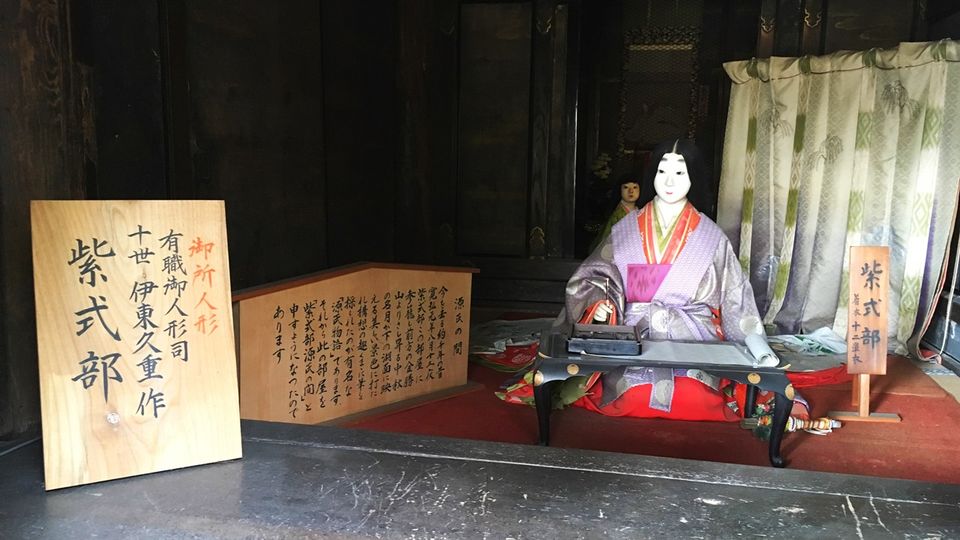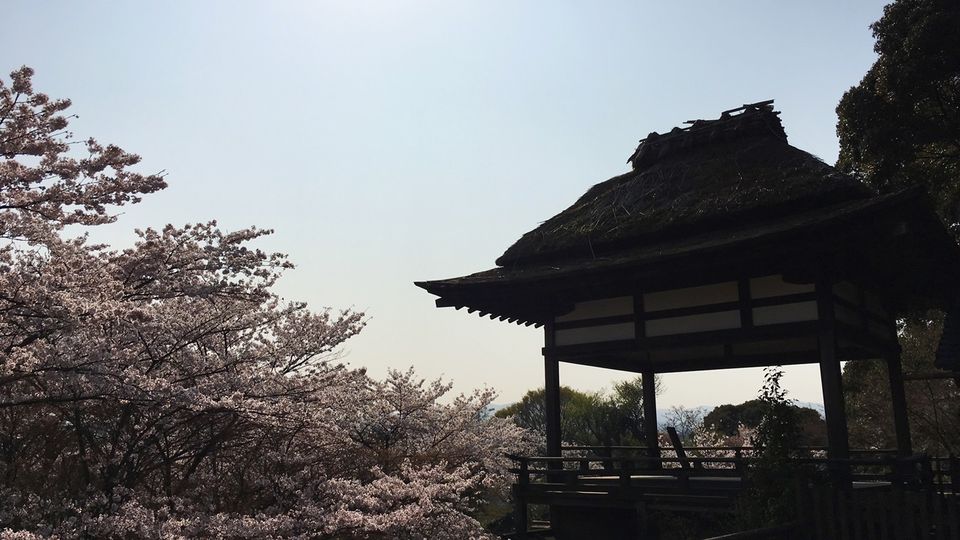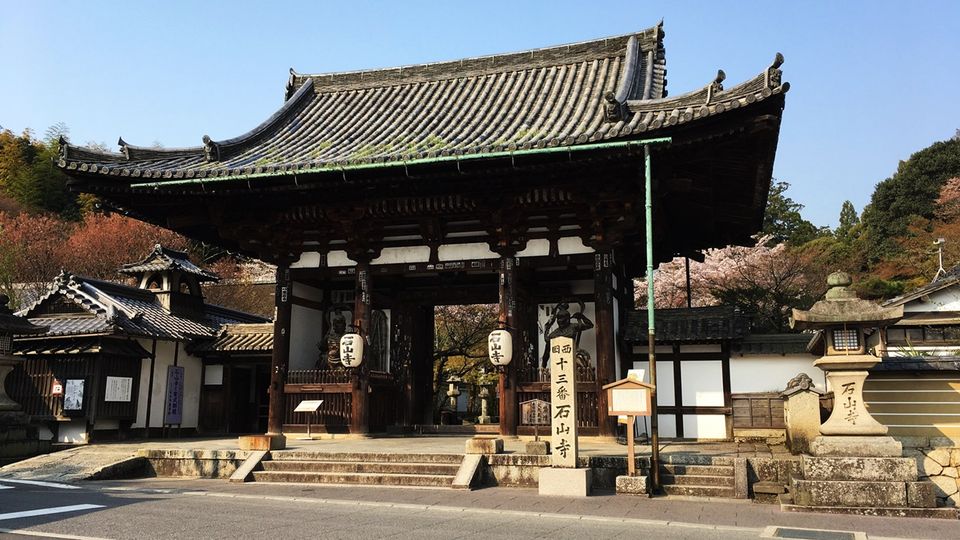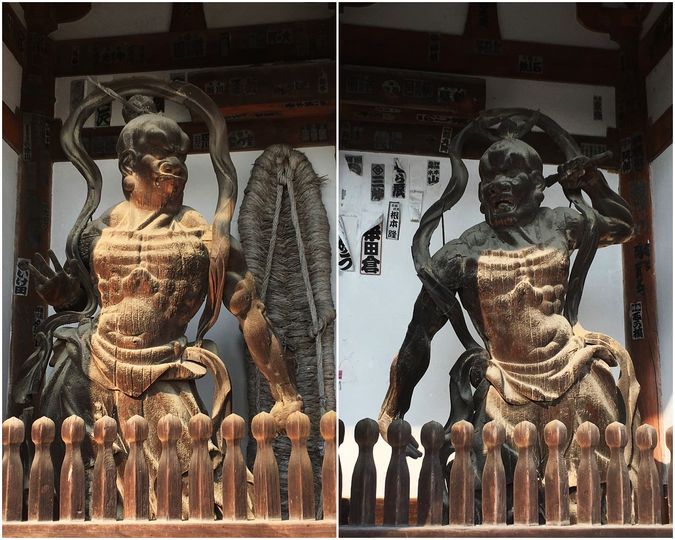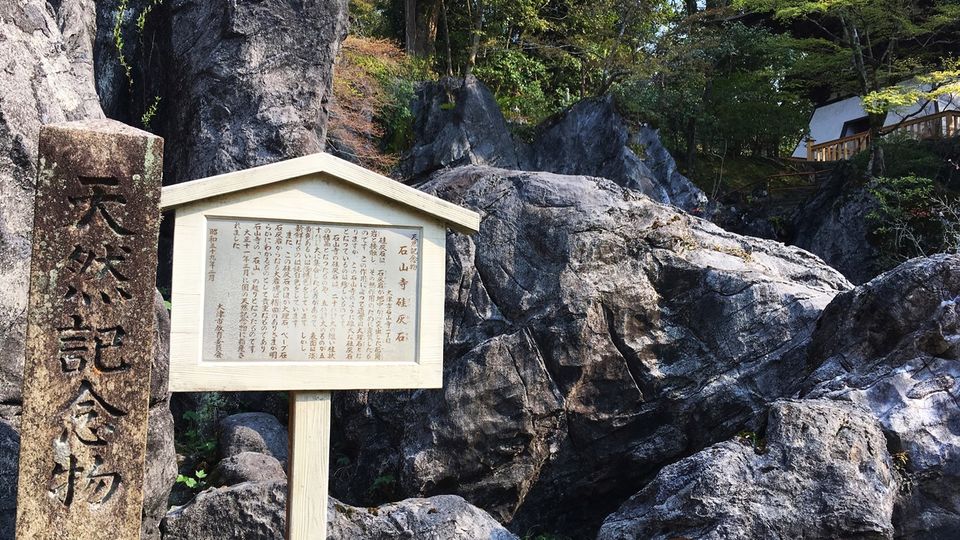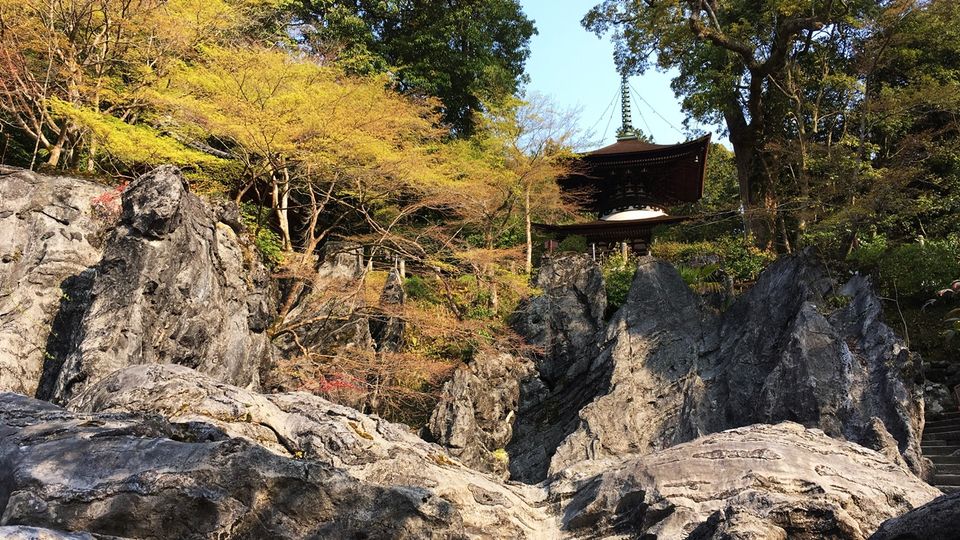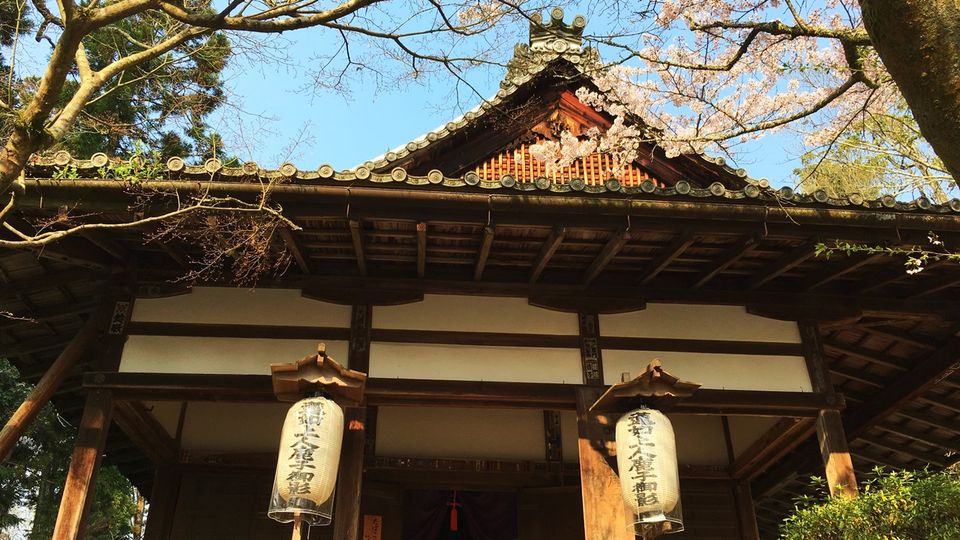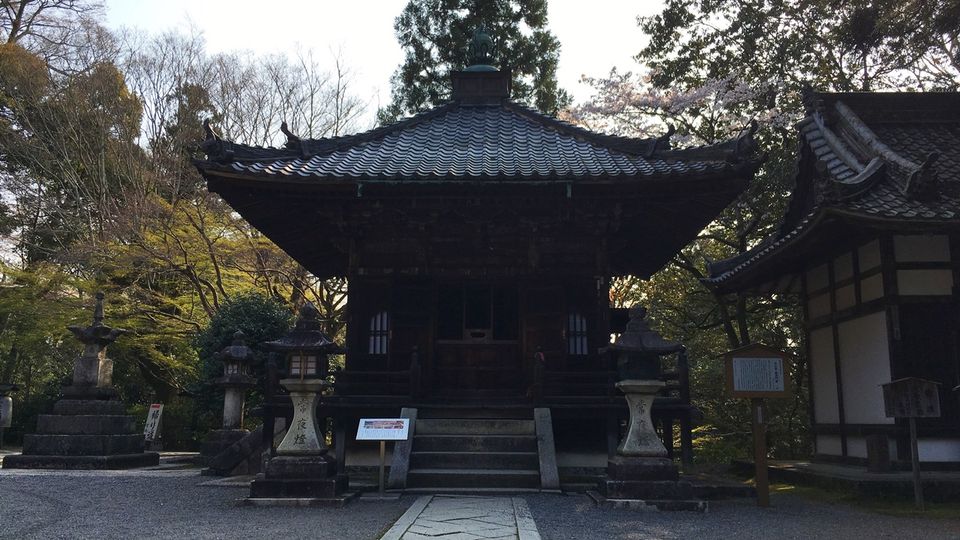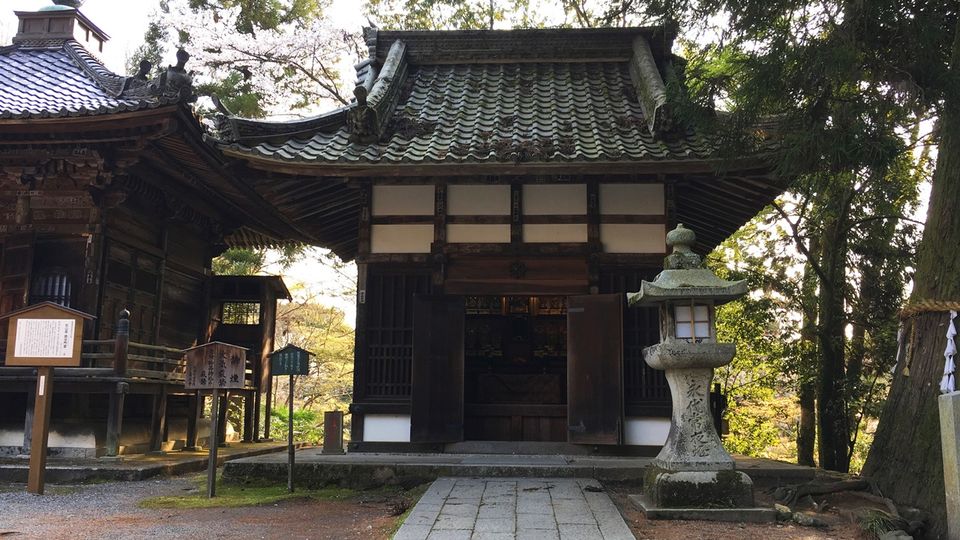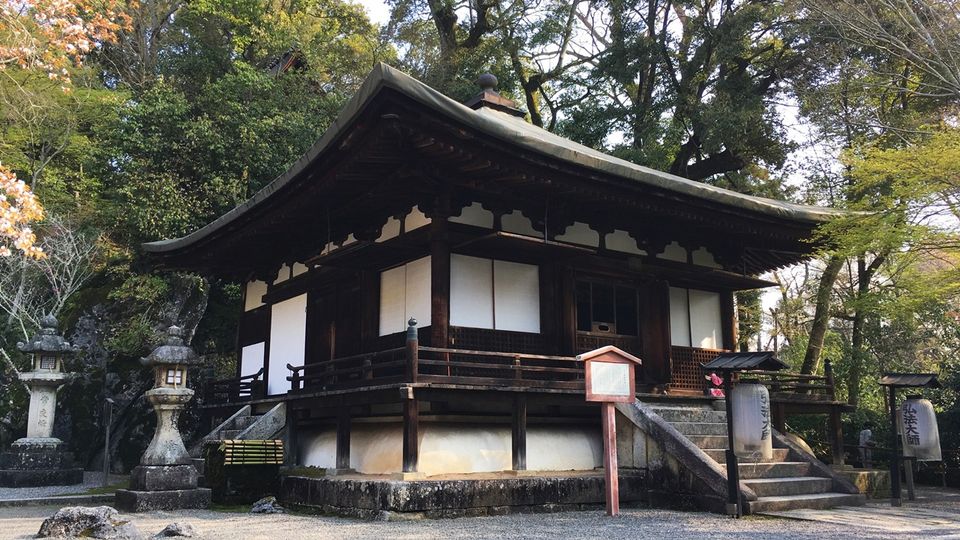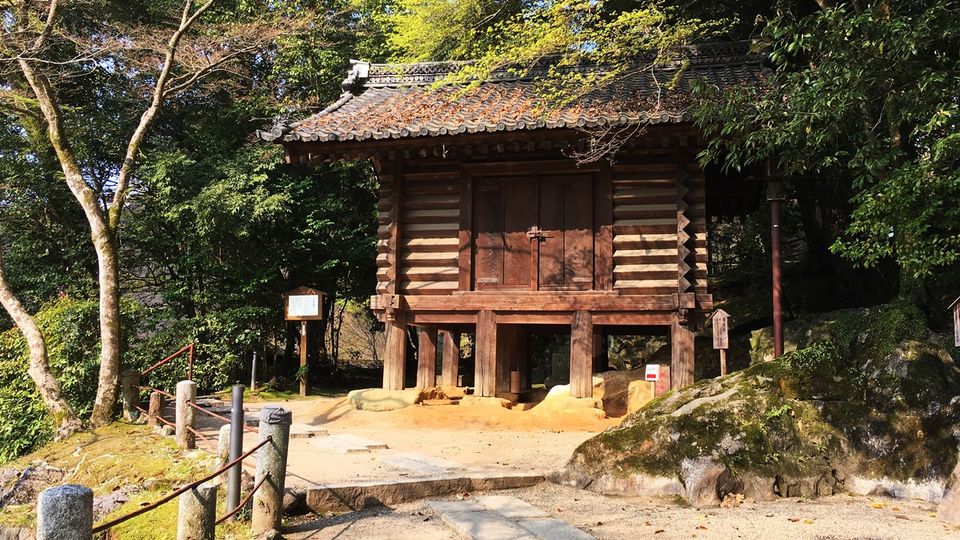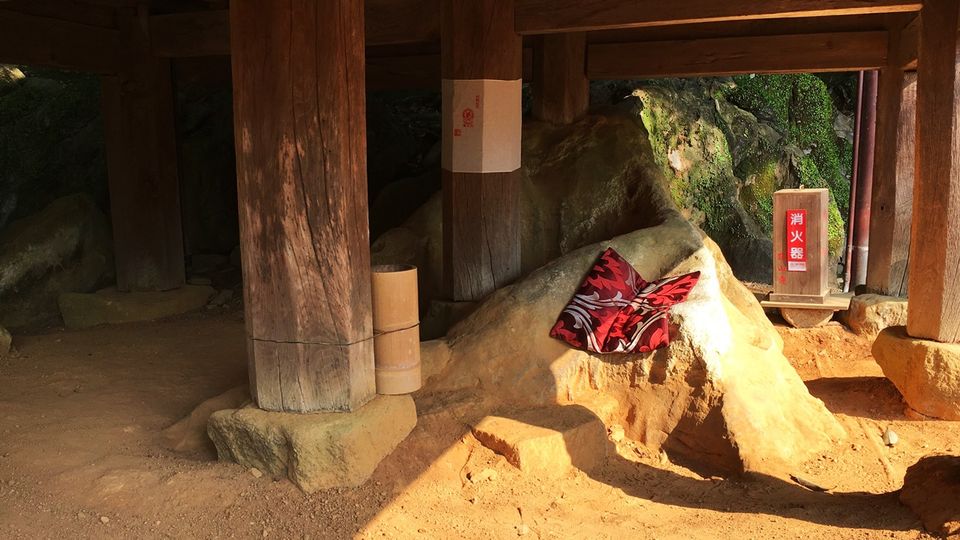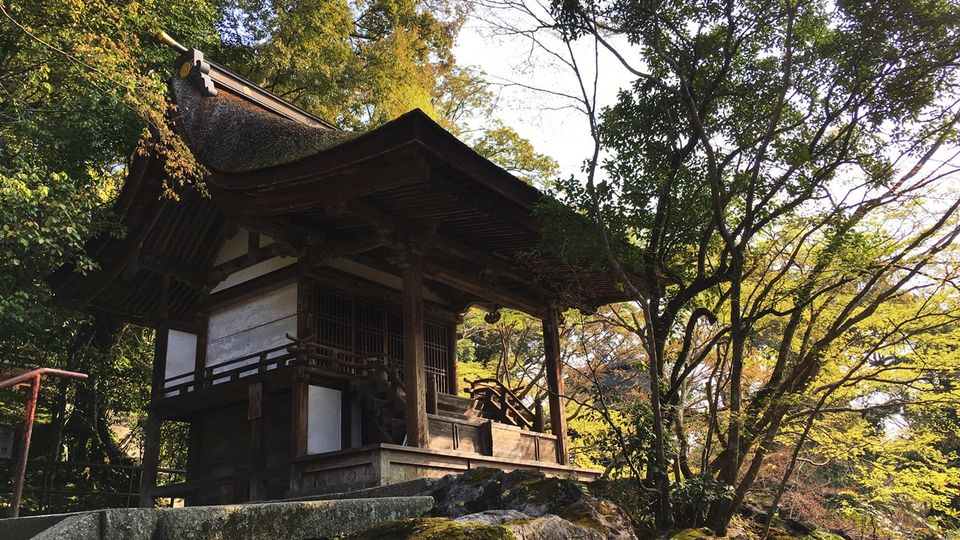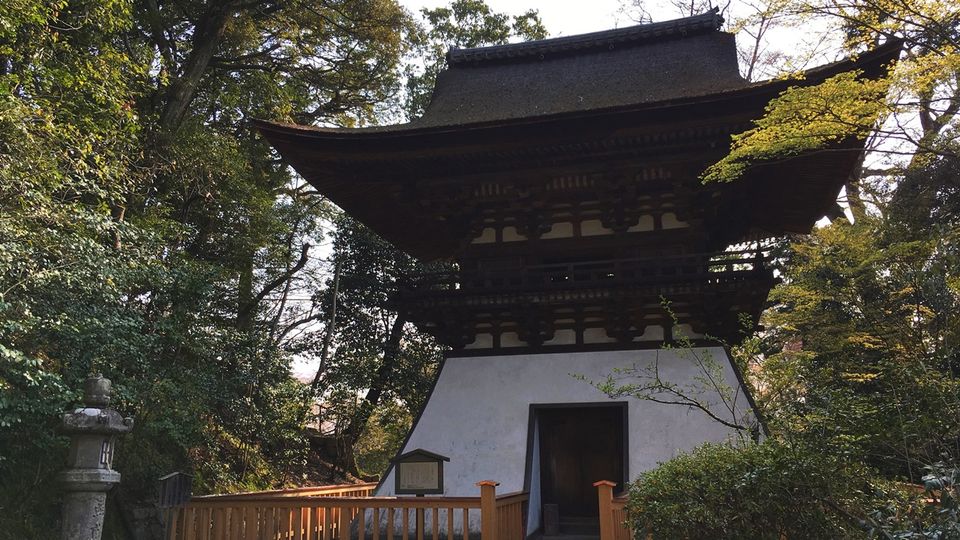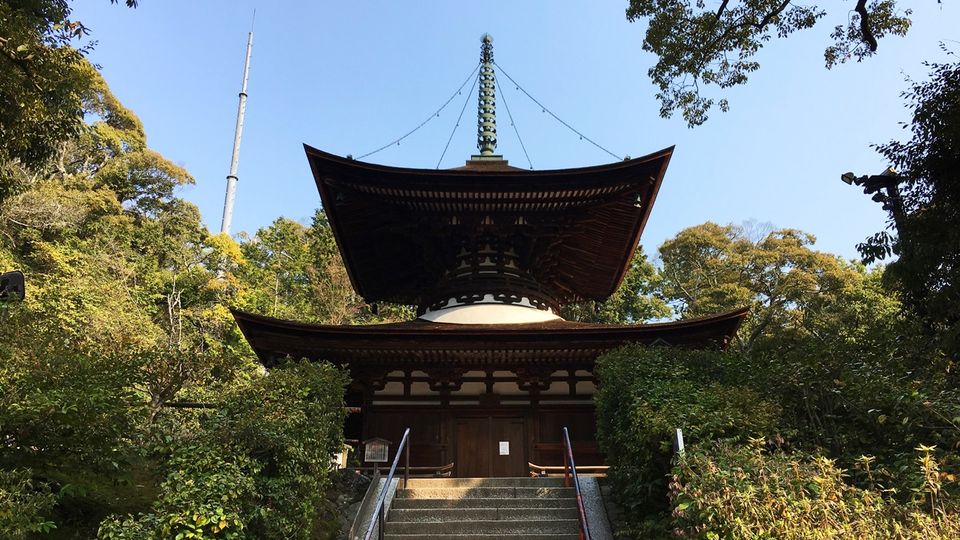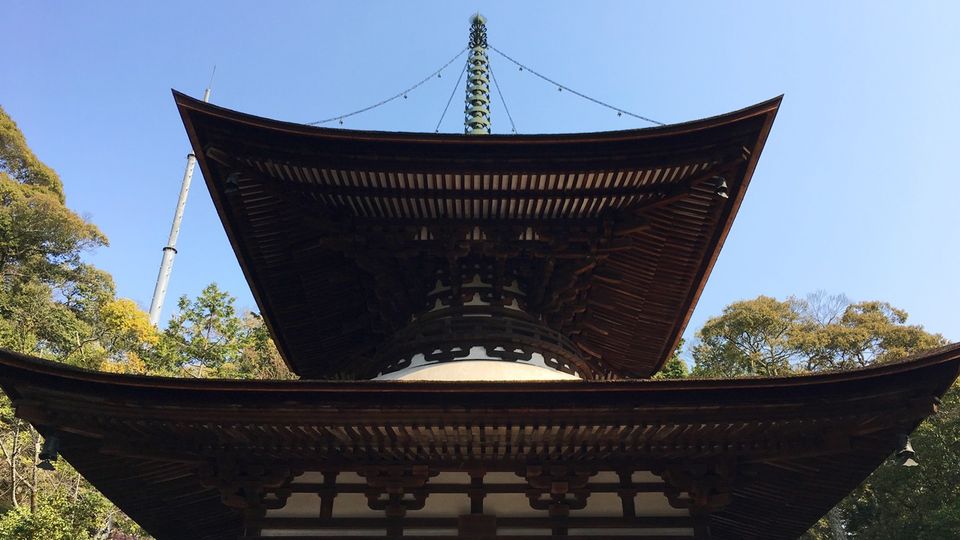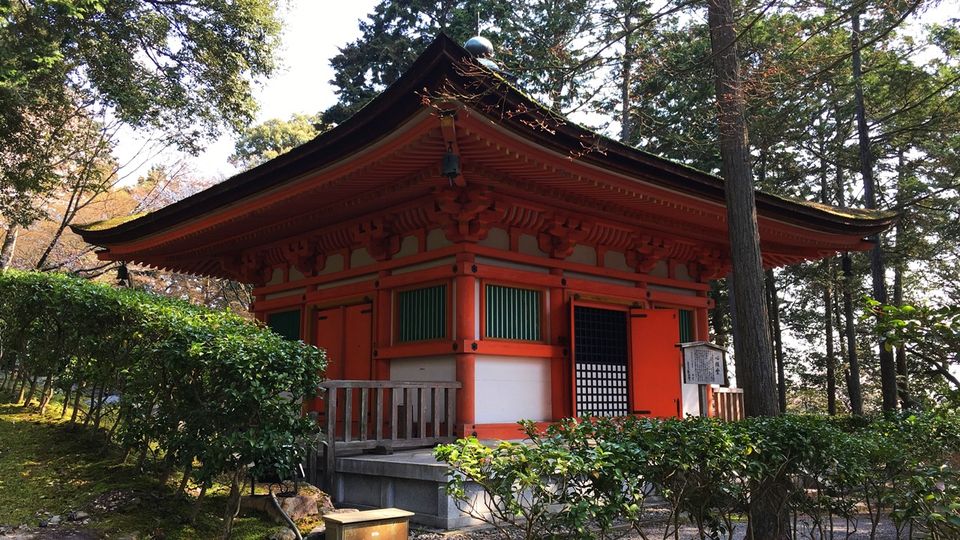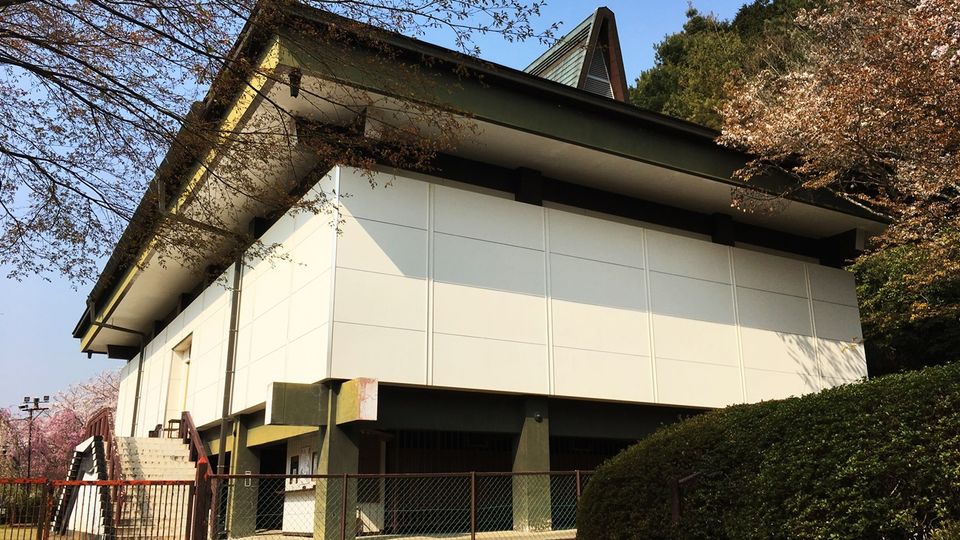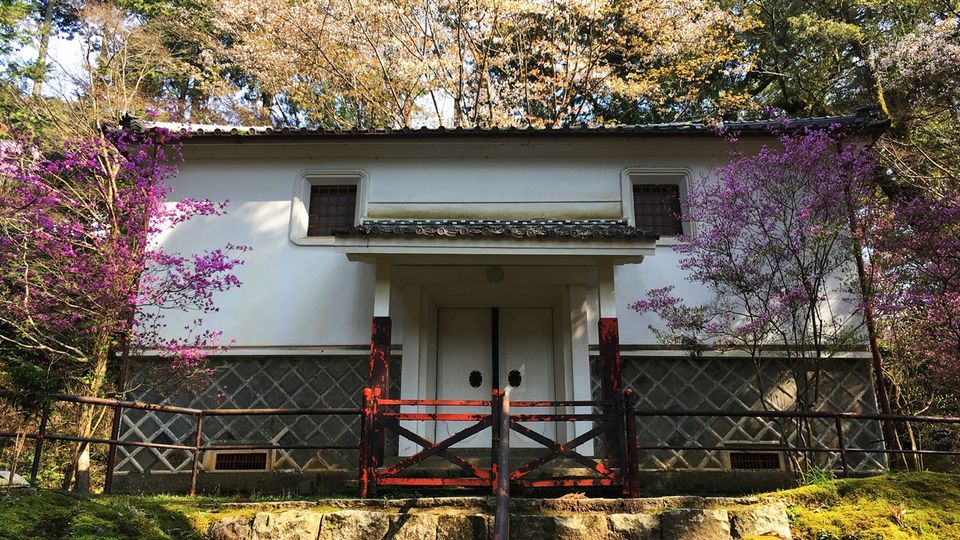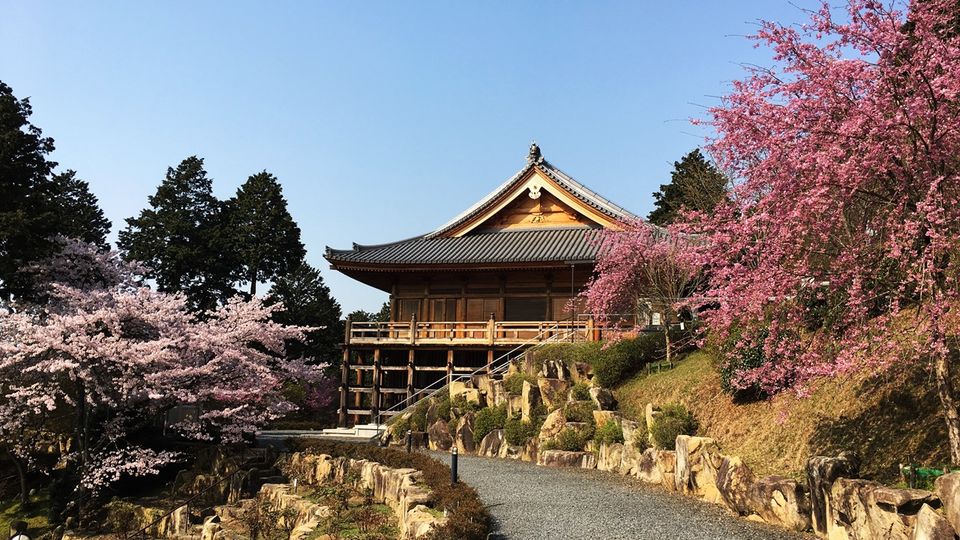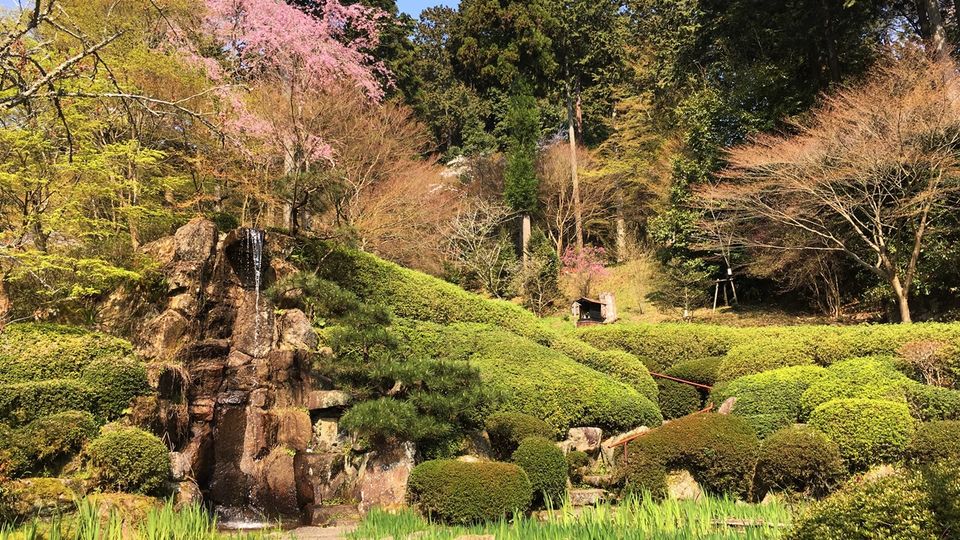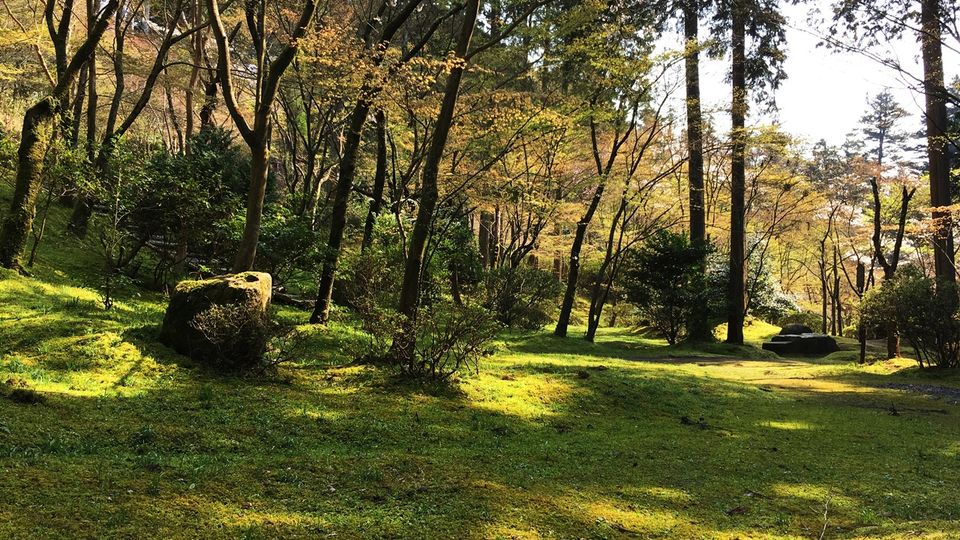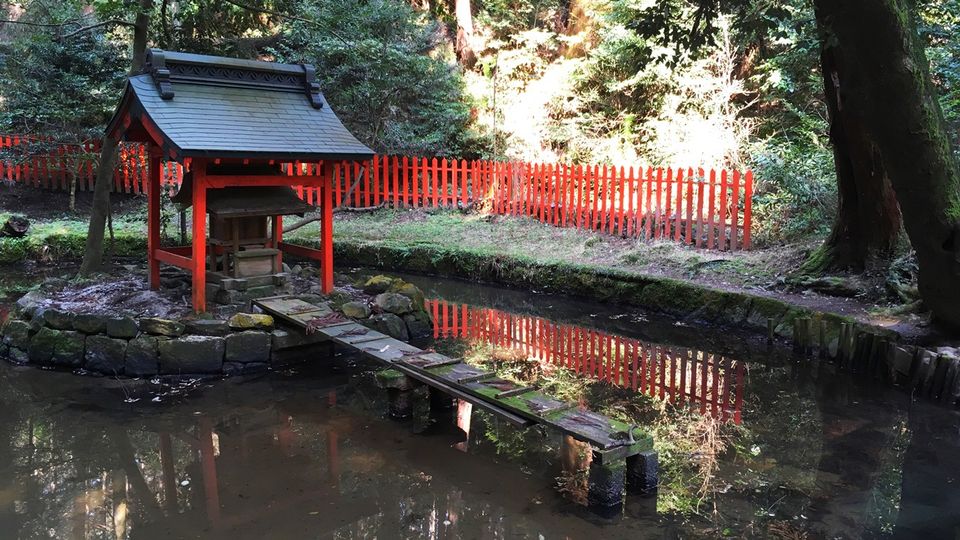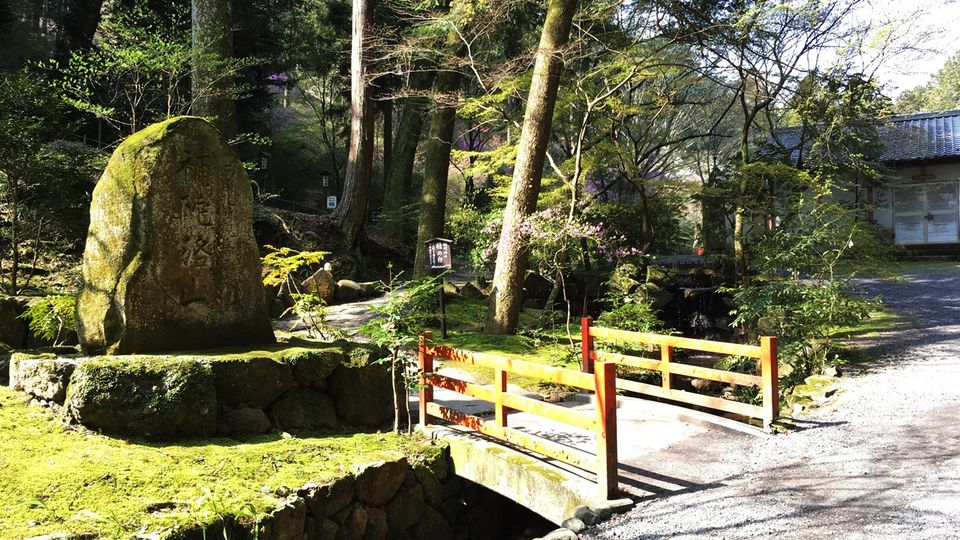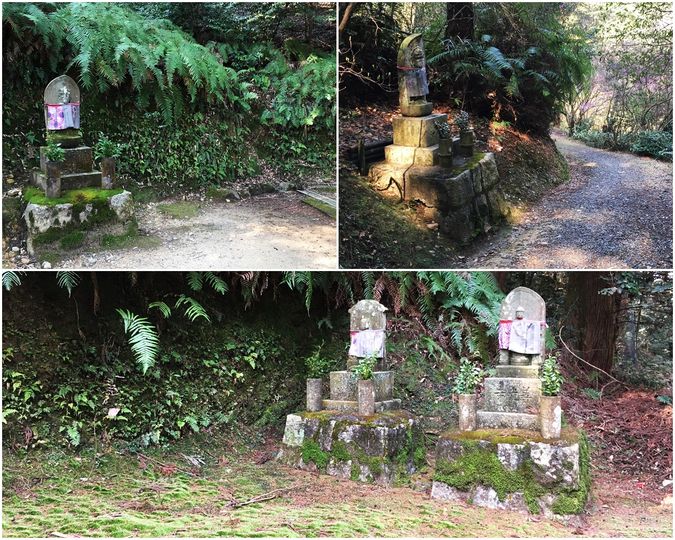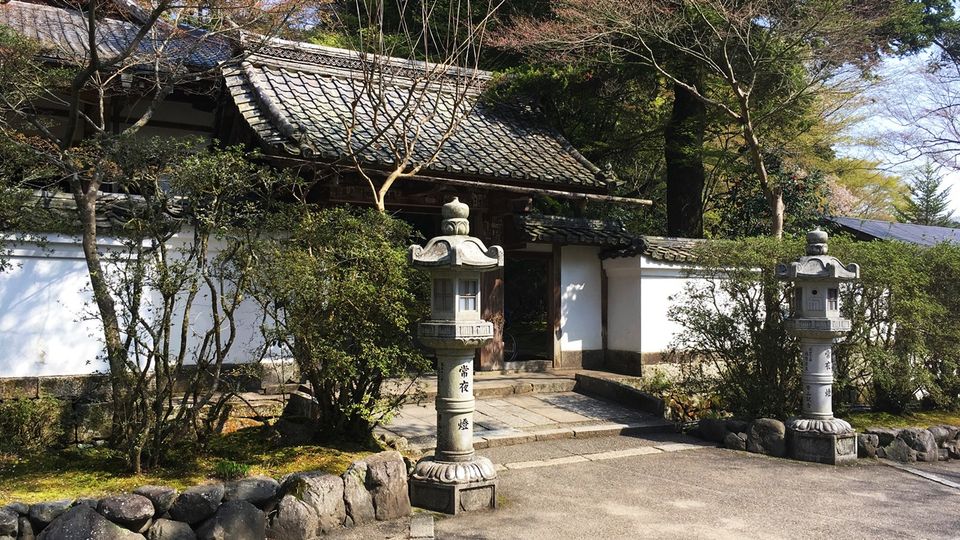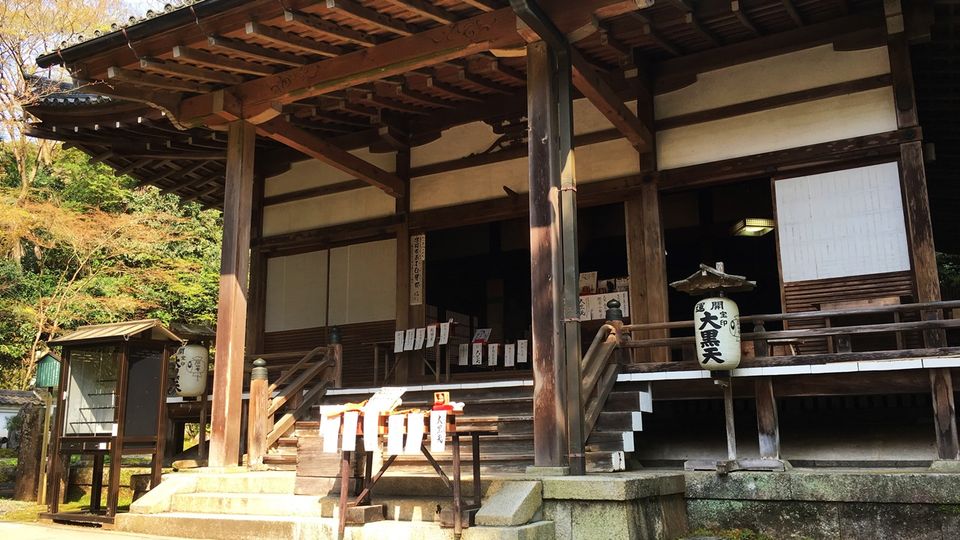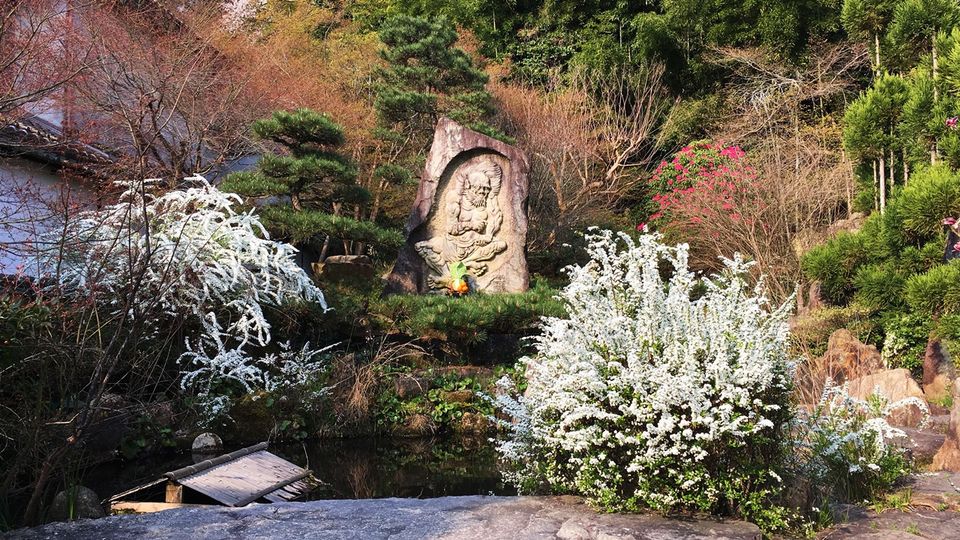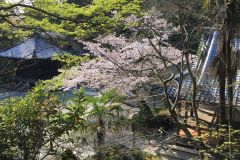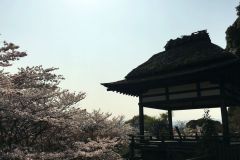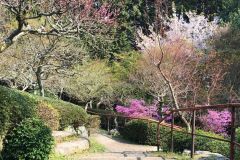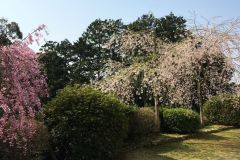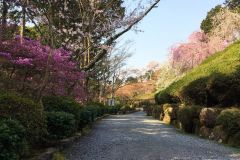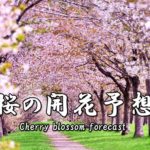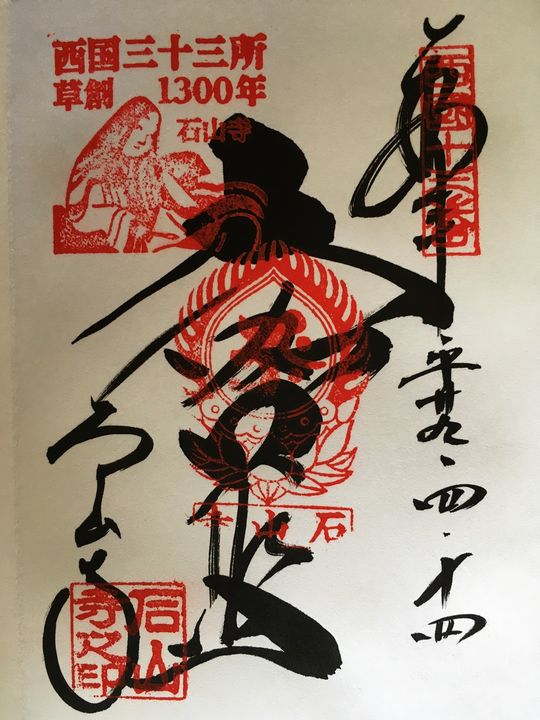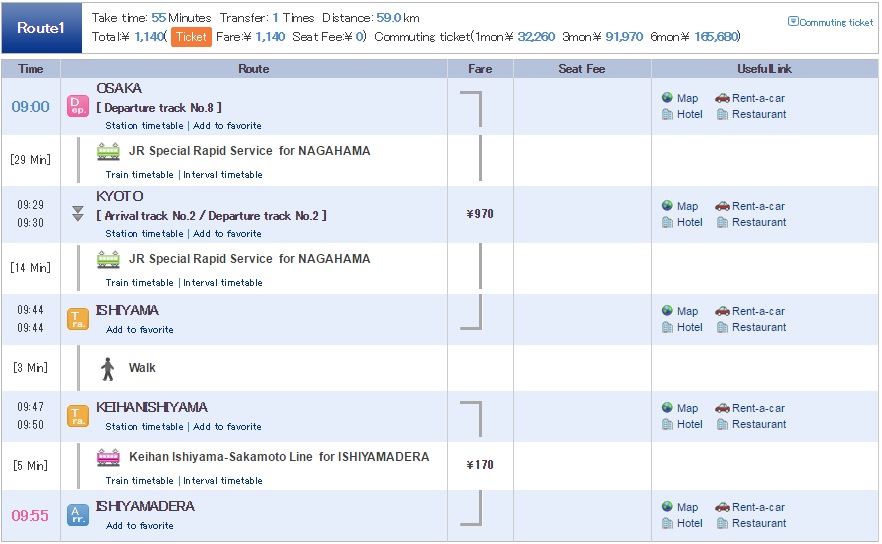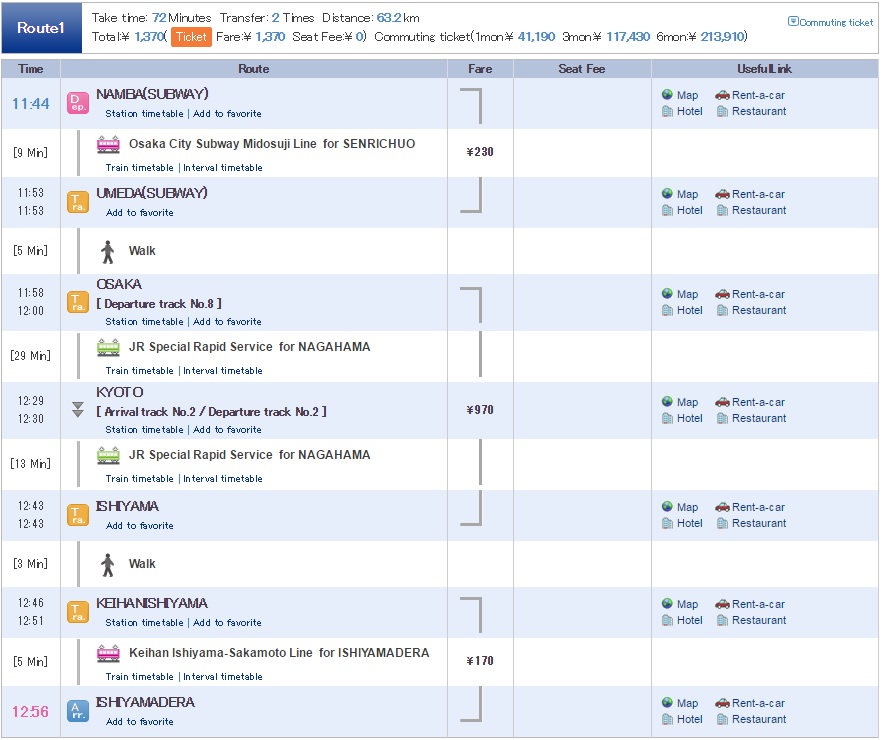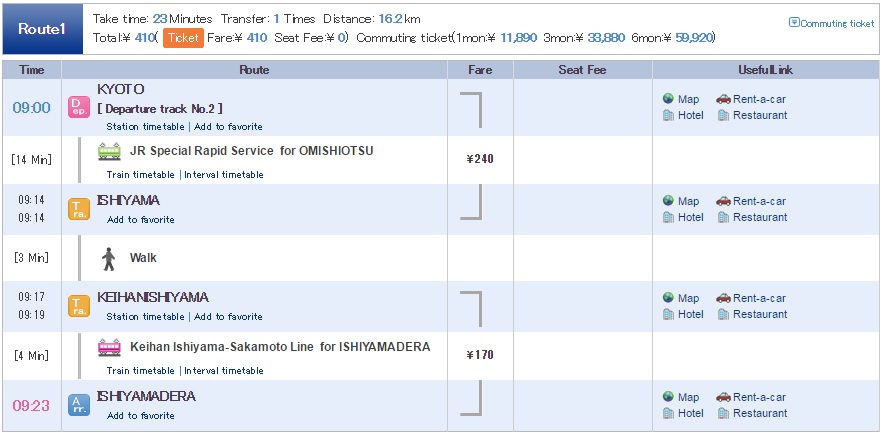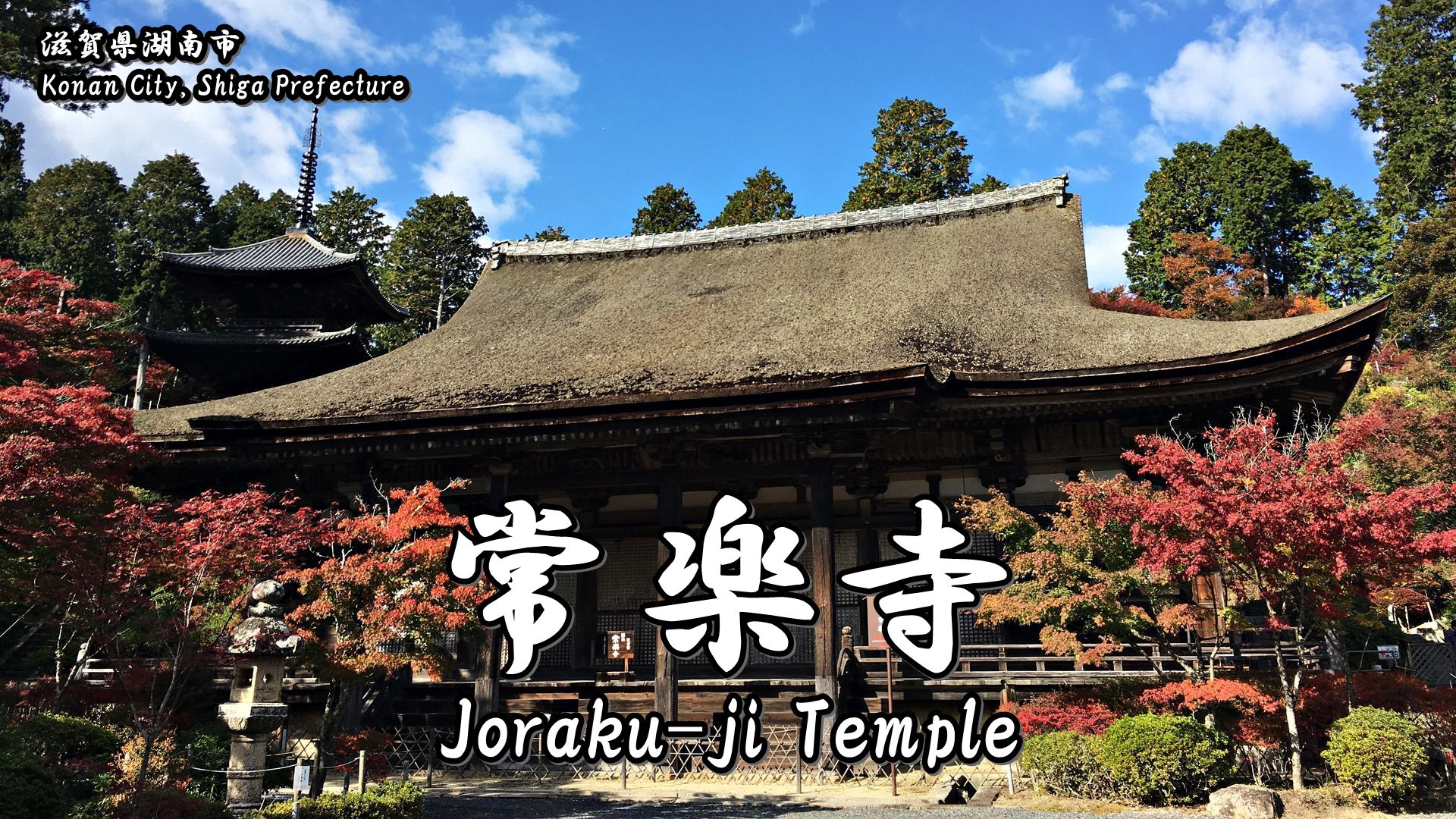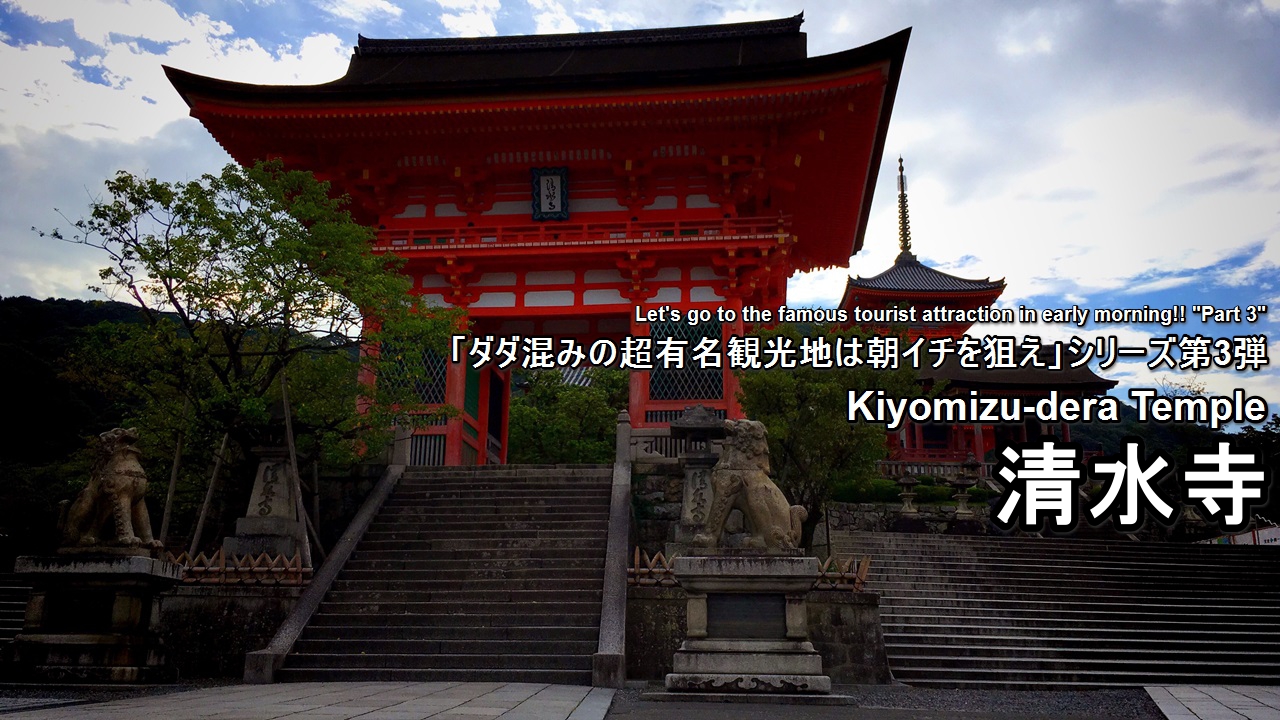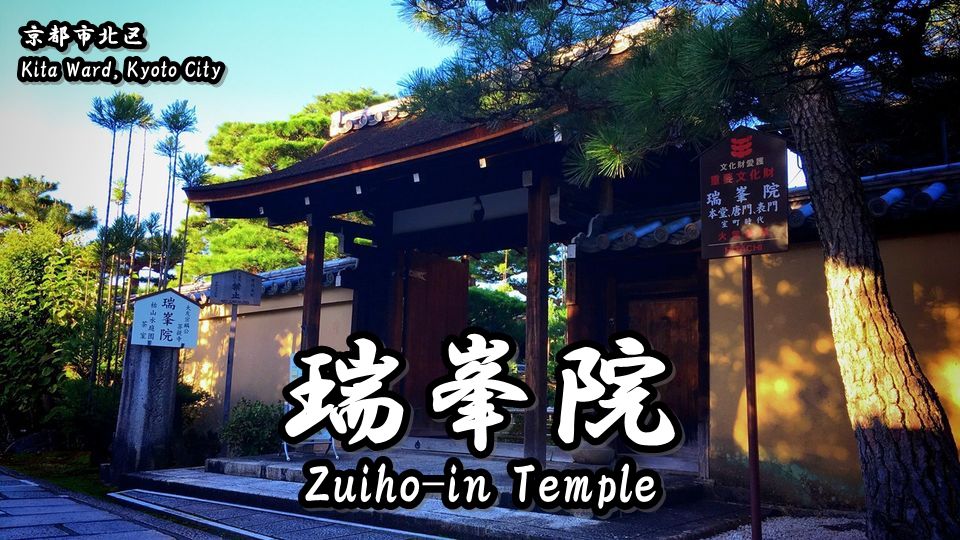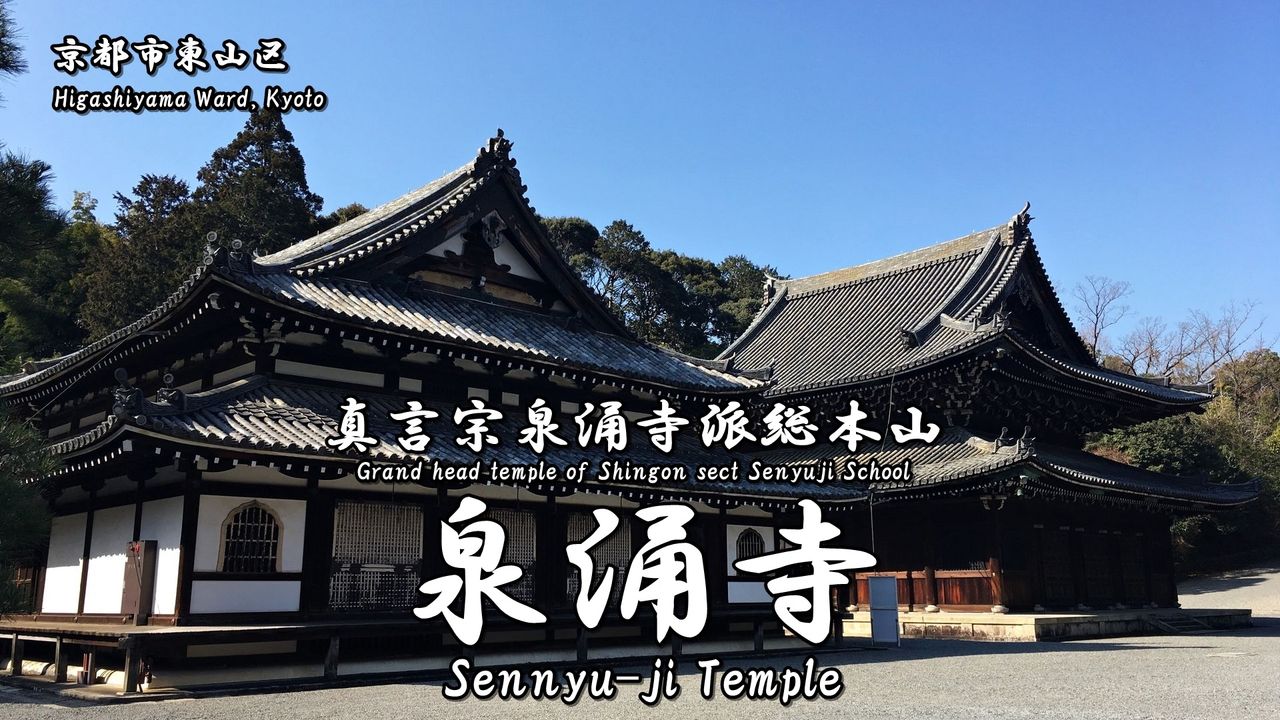Ishiyama-dera (石山寺) is a To-ji Shingon sect temple located at Otsu City, Shiga Prefecture.
This temple is known as a birth place of the ‘Genji-Monogatari (the Tale of Genji)‘ which was written by Murasaki Shikibu.
Precincts of this temple is also famous for its cherry blossoms (spring) and colored leaves (autumn).
Highlight of this temple is the scenery that Murasaki Shikibu loved.
Scenery of this temple’s building is called ’Ishiyama no Shugetsu’, and is one of the eight views of Omi.
Because Murasaki Shikibu watched this scenery, it is said that she thought up the ‘Genji-Monogatari (the Tale of Genji)’.
History of Ishiyama-dera
Let’s study the history of this temple with me before introducing of this temple.
I think that we can enjoy the sightseeing of this temple more by learning the history of it. XD
It was founded in 747 of the Nara period by imperial prayer of Emperor Shomu (聖武天皇).
Principle image is Nyoirin Kannon (如意輪観音:Bodhisattva of Compassion) and the founder was Roben (良弁).
There are many historical structures remaining in this temple.
Hon-do hall, built in 1096 of the Heian period, is alsodesignated as a national treasure, and is the oldest architecture in Shiga Prefecture.
In addition, it is said that Tahoto (two-storied) pagoda in this temple, built in 1194 of the Kamakura period donated by MINAMOTO no Yoritomo, is the oldest Tahoto pagoda in Japan.
It is also famous as a temple where Murasaki Shikibu (紫式部) visited many times.
She was the author of “Genji Monogatari (The Tale of Genji)“, which represents the narrative literature of the Heian Period.
Scenery of this temple’s building is called ’Ishiyama no Shugetsu’, and is one of the eight views of Omi.
Because Murasaki Shikibu watched this scenery, it is said that she thought up the ‘Genji-Monogatari (the Tale of Genji)’.
Information for visitors
Information
Address:1-1-1, Ishiyamadera, Otsu-shi, Shiga, 520-0861, Japan
Phone number:+81-77-537-0013
Foundation:747
Founder:Roben (良弁)
Sect:To-ji Shingon sect
Principal image:Nyoirin Kannon (如意輪観音:Bodhisattva of Compassion)
Open
8:00 ~ 16:30
Admission fee
| Adults | 500 yen |
| Elementary students | 250 yen |
Temple’s Website
Other information
・Please ask temple’s staff where you can take photos and videos.
・Worship method of a shinto shrine and a buddhist temple, please refer to the following article.
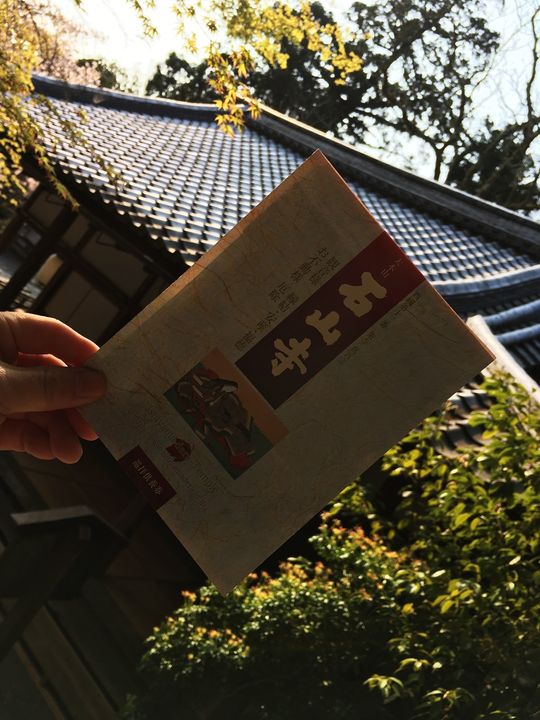
Next, let’s see highlights of this temple!
Highlights of Ishiyama-dera
- 東大門 (重要文化財):Higashi-dai-mon gate (Important cultural property)
- 本堂 (国宝)*:Hon-do hall (National treasure)*
- 石山寺硅灰石 (天然記念物)*:Keikai-seki stone (Natural monument)*
- 蓮如堂 (重要文化財)*:Rennyo-do hall (Important cultural property)*
- 毘沙門堂*:Bishamon-do hall*
- 観音堂*:Kannon-do hall*
- 御影堂 (重要文化財)*:Miei-do hall (Important cultural property)*
- 経蔵 (重要文化財)*:Kyozo (Important cultural property)*
- 腰掛石*:Koshikake-ishi (Stool stone)*
- 三十八所権現社本殿 (重要文化財)*:Inner Shrine dedicated to the thirty-eight deities (Important cultural property)*
- 鐘楼 (重要文化財)*:Shoro (Bell tower) (Important cultural property)*
- 多宝塔 (国宝)*:Tahoto (two-storied) pagoda (National treasure)*
- 源頼朝供養塔*:Memorial Service Pagoda of Minamoto-no-Yoritomo*
- 月見亭*:Tsukimi-tei*
- 芭蕉庵(茶室)*:Basho-an (Tea house)*
- 心経堂*:Shinkyo-do hall*
- 豊浄殿*:Hojo-den hall*
- 宝蔵*:Hozo (Treasure house)*
- 光堂*:Ko-do hall*
- 紫式部像*:Statue of Murasaki Shikibu*
- 無憂園*:Muyu-en garden*
- 八大龍王社*:Hachidairyuo-sha shrine*
- 西国三十三所観音霊場*:The thirty-three Kannon temples in western Japan*
- くぐり岩*:kuguri-iwa*
- 大黒堂*:Daikoku-do hall*
- 朗澄大徳ゆかりの庭園:The garden of Rochodaitoku
This mark ‘*‘ is a pay area.
東大門 (重要文化財):Higashi-dai-mon gate (Important cultural property)
Higashi-dai-mon gate was built in 1190 of the Kamakura period donated by MINAMOTO no Yoritomo.
It is designated as an important cultural property.
This gate has the pair of great deva kings.
本堂 (国宝)*:Hon-do hall (National treasure)*
Hon-do hall was rebuilt in 1096 of the Heian period.
It is designated as a national treasure, and is the oldest architecture in Shiga Prefecture.
石山寺硅灰石 (天然記念物)*:Keikai-seki stone (Natural monument)*
Temple’s ground is made of limestone called ‘Keikai-seki stone‘.
These stones are all designated as a natural monument.
蓮如堂 (重要文化財)*:Rennyo-do hall (Important cultural property)*
Rennyo-do hall was built in 1602 of the Azuchi-Momoyama period.
It is designated as an important cultural property.
Image of Rennyo (蓮如), the priest of the Jodo Shinshu sect of Buddhism, is enshrined in this building.
毘沙門堂*:Bishamon-do hall*
Bishamon-do hall was built in 1773 of the Edo period.
Tobatsu Bishamonten (兜跋毘沙門天) is enshrined in this building.
観音堂*:Kannon-do hall*
Kannon-do hall was built in the Edo period.
Images of Guanyin of thirty-three Kannon temples in western Japan are enshrined in this building.
御影堂 (重要文化財)*:Miei-do hall (Important cultural property)*
Miei-do hall was built in 1398 of the Muromachi period.
It is designated as an important cultural property.
Image of Kobo-Daishi Kukai (弘法大師空海) and Roben (良弁) who was the founder of this temple are enshrined in this building.
経蔵 (重要文化財)*:Kyozo (Important cultural property)*
Kyozo, storehouse for keeping the Buddhist scripture, was built in the Azuchi-Momoyama period.
It is designated as an important cultural property.
腰掛石*:Koshikake-ishi (Stool stone)*
There is the stone called Koshikake-ishi under Kyozo.
This stone has the divine favor of the easy delivery.
三十八所権現社本殿 (重要文化財)*:Inner Shrine dedicated to the thirty-eight deities (Important cultural property)*
Inner Shrine dedicated to the thirty-eight deities was built in the Azuchi-Momoyama period.
It is designated as an important cultural property and has the role as the chinju-sha Shrine (protectant shrine of this temple).
鐘楼 (重要文化財)*:Shoro (Bell tower) (Important cultural property)*
Shoro (Bell tower) was built in the late Kamakura period.
It is designated as an important cultural property.
多宝塔 (国宝)*:Tahoto (two-storied) pagoda (National treasure)*
Tahoto (two-storied) pagoda was built in 1194 of the Kamakura period donated by MINAMOTO no Yoritomo.
It is designated as a national treasure.
The image of Dainichi Buddha (大日如来:Vairocana) is enshrined in this building.
源頼朝供養塔*:Memorial Service Pagoda of Minamoto-no-Yoritomo*
This is the grave of Minamoto no Yoritomo who was the first Shogun of Kamakura bakufu (Japanese feudal government headed by a shogun).
He is said to have been contributed to the rehabilitation of this temple.
月見亭*:Tsukimi-tei*
This is Tsukimi-tei which is the stage to watch the moon.
The scenery to see from Tsukimi-tei is called ’Ishiyama no Shugetsu (Autumn Moon at Ishiyama)’.
This scenery is one of the eight views of Omi.
芭蕉庵(茶室)*:Basho-an (Tea house)*
This is Basho-an which has the role as a tea house.
This tea house was named after Matsuo Basho (松尾芭蕉) who is the most famous Haiku poet of the Edo period.
心経堂*:Shinkyo-do hall*
Shinkyo-do hall was built in 1990.
Copying of a sutra is put in this building.
豊浄殿*:Hojo-den hall*
This is Hojo-den hall.
Festival of Murasaki Shikibu is held in this building on specific days in spring and autumn.
宝蔵*:Hozo (Treasure house)*
Hozo was built in 1808 of the Edo period.
It has the role as a treasure house.
光堂*:Ko-do hall*
Ko-do hall was built in 2008.
Various Buddhism ceremonies are held in this building.
紫式部像*:Statue of Murasaki Shikibu*
無憂園*:Muyu-en garden*
This Japanese garden is called Muyu-en garden.
This is the circuit style Japanese garden and moss is splendid.
八大龍王社*:Hachidairyuo-sha shrine*
This is Hachidairyuo-sha shrine.
Hachidairyuo is the god of a dragon protecting the Buddhistic religion.
西国三十三所観音霊場*:The thirty-three Kannon temples in western Japan*
West area of this temple is the miniature scale thirty-three Kannon temples in western Japan.
If you move around here, it has the same meaning as ‘Going to the thirty-three Kannon temples.’
くぐり岩*:kuguri-iwa*
This is Kuguri-iwa made of marbles.
It is said that if you go through this rock, you will be lucky.
大黒堂*:Daikoku-do hall*
Daikoku-do hall was built in the Meiji period.
Statue of Daikokuten (God of wealth) is enshrined in this building.
朗澄大徳ゆかりの庭園:The garden of Rochodaitoku
This is the garden of Rochodaitoku.
Rochodaitoku (朗澄大徳) is the restorer of this temple.
Cherry Blossoms of Ishiyama-dera
[Information of cherry blossom forecasts]
Video of Ishiyama-dera
Photos of Ishiyama-dera
Goshuin of Ishiyama-dera
How to get to Ishiyama-dera
Nearest station is Keihan Ishiyama-Sakamoto-Line Ishiyamadera station.
We can also go by bus from ‘JR Ishiyama Station’ and ‘Keihan Ishiyama-Sakamoto-Line Ishiyamadera station’.
From Osaka Sta. (by train)
Timetable and Route Search (train)
1.Get on the JR Kyoto/Biwako Line from Osaka Station to Ishiyama Station and change to the Keihan Ishiyama-Sakamoto Line.
2.Get on the Keihan Ishiyama-Sakamoto Line from Keihan Ishiyama Station to Ishiyamadera Station.
From Namba Sta. (by train)
Timetable and Route Search (train)
1.Get on the Osaka Metro Midosuji Line from Namba Station to Umeda Station and change to the JR Kyoto/Biwako Line.
2.Get on the JR Kyoto/Biwako Line from Osaka Station to Ishiyama Station and change to the Keihan Ishiyama-Sakamoto Line.
2.Get on the Keihan Ishiyama-Sakamoto Line from Keihan Ishiyama Station to Ishiyamadera Station.
From Kyoto Sta. (by train)
Timetable and Route Search (train)
1.Get on the JR Biwako Line from Kyoto Station to Ishiyama Station and change to the Keihan Ishiyama-Sakamoto Line.
2.Get on the Keihan Ishiyama-Sakamoto Line from Keihan Ishiyama Station to Ishiyamadera Station.
From Ishiyamadera station (on foot)
no images were found
It’s about 15 minutes (800m) on foot.
Get on a bus from JR Ishiyama Station
Timetable and Route Search (bus)
Please get on a Keihan Bus No.1,2,4,52,53,54 (Ishiyama Sta. [1]) and get off Ishiyamadera Sanmonmae.
Bus company:Keihan Bus
Routes/Destination:
・Route No.1[Bound for Ishiyama-Danchi]
・Route No. 2,4[Bound for Shinhama]
・Route No. 52,53,54[Bound for Nango-2chome]
Boarding bus stop:Ishiyama Sta. [1]
Alighting bus stop:Ishiyamadera Sanmonmae
Bus fare:210 yen
Time required:About 7 min
Get on a bus from Keihan Ishiyamadera Station
Timetable and Route Search (bus)
Please get on a Keihan Bus No.1,2,4,52,53,54 (Keihan Ishiyamadera) and get off Ishiyamadera Sanmonmae.
Bus company:Keihan Bus
Routes/Destination:
・Route No.1[Bound for Ishiyama-Danchi]
・Route No. 2,4[Bound for Shinhama]
・Route No. 52,53,54[Bound for Nango-2chome]
Boarding bus stop:Keihan Ishiyamadera
Alighting bus stop:Ishiyamadera Sanmonmae
Bus fare:210 yen
Time required:About 3 min
Take a taxi
From Kyoto Station:about 8,000 yen (30 minutes)
From Gion-Shijo Station:about 7,500 yen (30 minutes)
From JR Ishiyama Station:about 1,200 yen (10 minutes)
・Let’s show a taxi driver the following phrase.
・If you want to call a taxi, let’s show the following phrase.
Phone number of taxi dispatch (Kyoto Station)
Phone number of taxi dispatch (Ishiyama Station)
Hotel search & reservation around Ishiyama-dera
How did you like it?
Have a nice trip!

